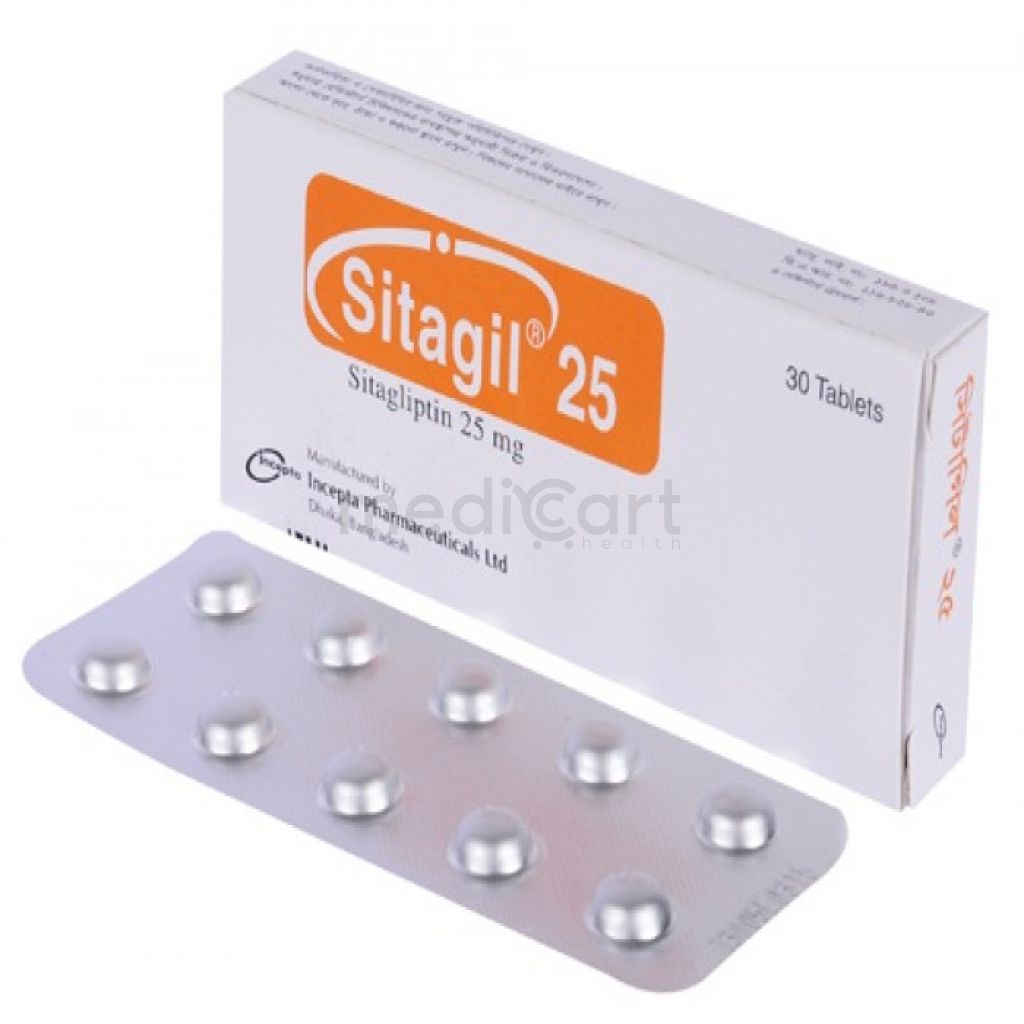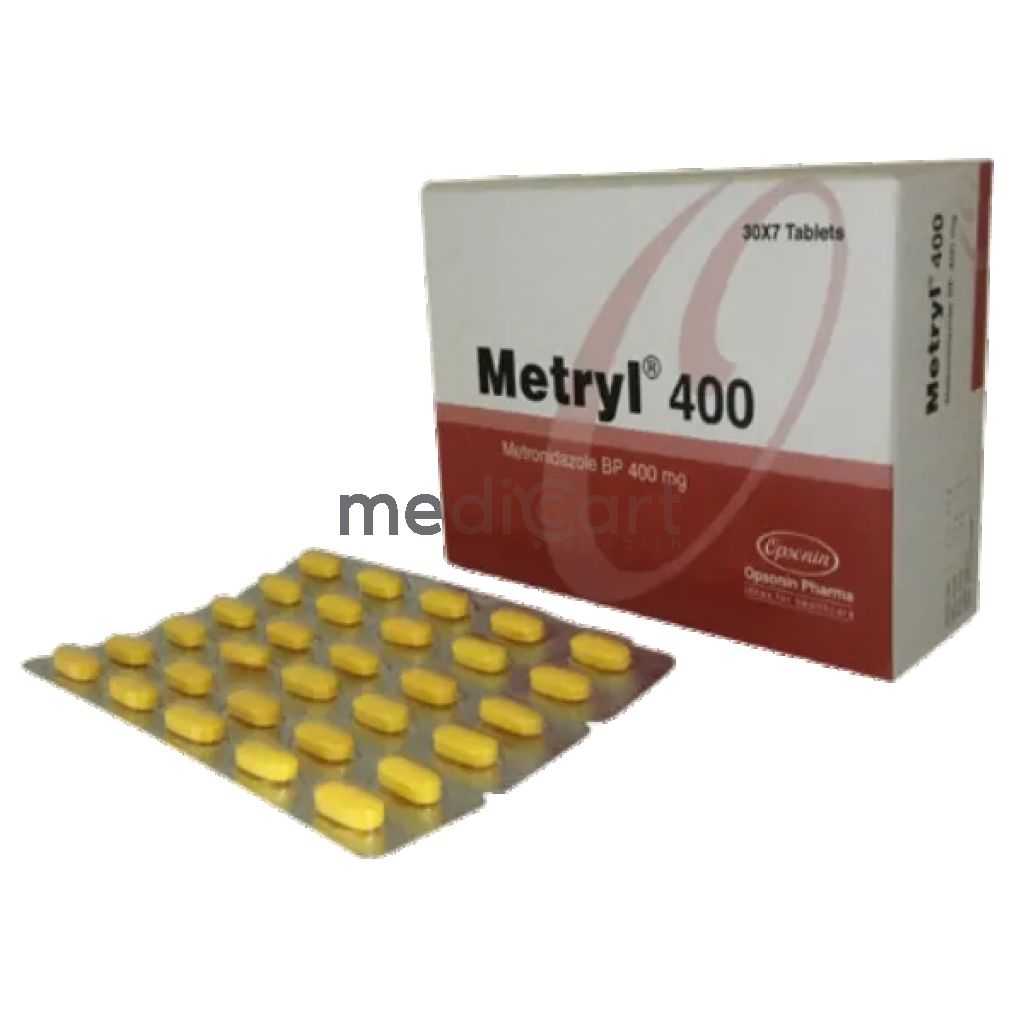

Sitagil - 25mg
Tablet* Delivery will be done in Dhaka city only.
Alternative Product
More Information About - Sitagil - 25mg
Description
Generic Name
Sitagliptin
Precaution
Patient w/ type 1 diabetes, history of angioedema. Not intended for the treatment of diabetic ketoacidosis. Moderate and severe renal impairment. Pregnancy and lactation. Monitoring Parameters Monitor glycosylated Hb (HbA1c), serum glucose. Assess renal function prior to initiation of therapy and periodically thereafter. Lactation: Not known whether excreted in breast milk: use caution
Indication
Type 2 diabetes mellitus
Contra Indication
Hypersensitivity reactions such as anaphylaxis, angioedema, and exfoliative skin conditions including Stevens-Johnson syndrome can occur. Type 1 diabetes. Diabetic ketoacidosis.
Dose
N/A
Side Effect
1-10% Nasopharyngitis (5%),Diarrhea (4%),Headache (3.6%),Constipation (3%),Peripheral edema (2%),Nausea (2%),Pharyngitis (1%),Osteoarthritis (1%),URI (1%) <1% Hypersensitivity reactions such as anaphylaxis, angioedema, rash, urticaria, cutaneous vasculitis, and exfoliative skin conditions (including Stevens-Johnson syndrome) Hepatic enzyme elevations,Acute pancreatitis, including fatal and nonfatal hemorrhagic and necrotizing pancreatitis.Constipation.Vomiting.Worsening renal function, including acute renal failure (sometimes requiring dialysis),Severe and disabling arthralgia,Myalgia,Pain in extremity,Back pain
Pregnancy Category
Name : Not Classified
Description
FDA has not yet classified the drug into a specified pregnancy category.Mode of Action
Sitagliptin inhibits dipeptidyl peptidase IV (DPP-IV), resulting in prolonged active incretin levels. Incretin hormones increases insulin synthesis and release from pancreatic beta-cells and reduces glucagon secretion from pancreatic beta-cells. Reduced glucagon secretion leads to decreased hepatic glucose production.
Interaction
Increased risk of hypoglycaemia when used in combination w/ sulfonylureas or insulin.
Pregnancy Category Note
Pregnancy Limited available data in pregnant women are not sufficient to inform a drug-associated risk for major birth defects and miscarriage. There are risks to the mother and fetus associated with poorly controlled diabetes in pregnancy; no adverse developmental effects were observed when sitagliptin was administered to pregnant rats and rabbits during organogenesis at oral doses up to 30-times and 20-times, respectively, the 100 mg clinical dose, based on AUC Poorly controlled diabetes in pregnancy increases maternal risk for diabetic ketoacidosis, preeclampsia, spontaneous abortions, preterm delivery, still birth, and delivery complications; poorly controlled diabetes increases fetal risk for major birth defects, still birth, and macrosomia related morbidity Lactation There is no information regarding presence of drug in human milk, effects on breastfed infant, or on milk production; drug is present in rat milk and therefore possibly present in human; developmental and health benefits of breastfeeding should be considered along with mother’s clinical need for therapy and any potential adverse effects on breastfed infant from therapy or from the underlying maternal condition
Adult Dose
Oral Type 2 diabetes mellitus Adult: 100 mg once daily. Hepatic impairment Mild to moderate impairment: Dose adjustment not necessary Severe impairment: Not studied
Child Dose
Safety and efficacy not established
Renal Dose
Renal impairment CrCl >50 mL/min: Dose adjustment not necessary CrCl 30-50 mL/min: 50 mg PO qDay CrCl <30 mL/min: 25 mg PO qDay ESRD: 25 mg PO qDay regardless of hemodialysis
Administration
May be taken with or without food.
Disclaimer
The information provided herein are for informational purposes only and not intended to be a substitute for professional medical advice, diagnosis, or treatment. Please note that this information should not be treated as a replacement for physical medical consultation or advice. Great effort has been placed to provide accurate and comprehensive data. However, Medicart along with its authors and editors make no representations or warranties and specifically disclaim all liability for any medical information provided on the site. The absence of any information and/or warning to any drug shall not be considered and assumed as an implied assurance of the Company.









